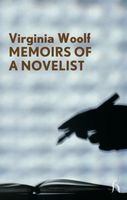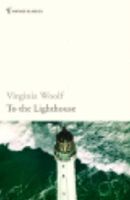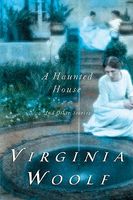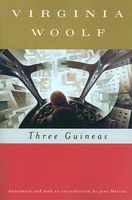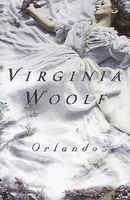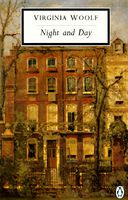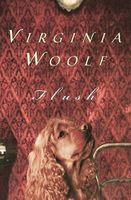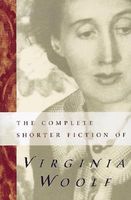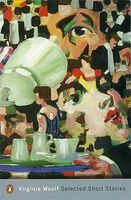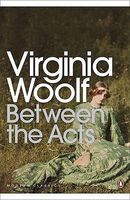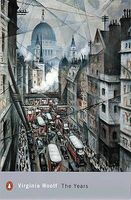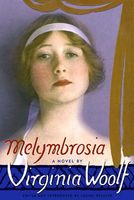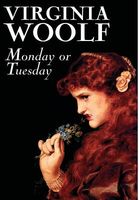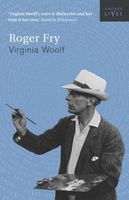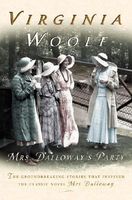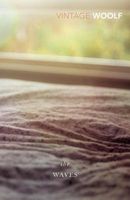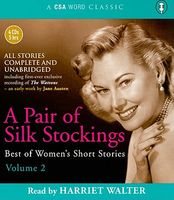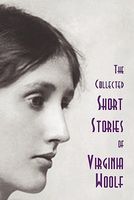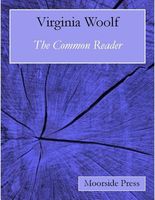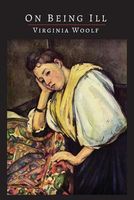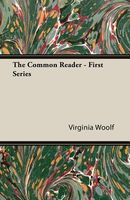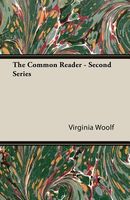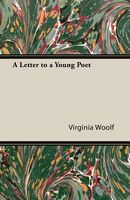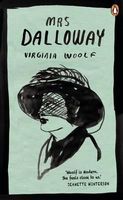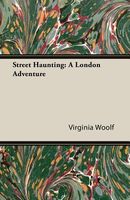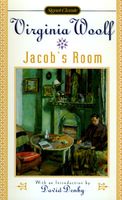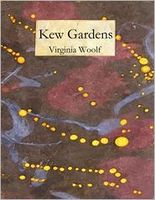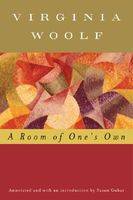- Welcome to FictionDB, Guest
- | My Account
- | Help

Virginia Woolf
Book List in Order: 35 titles
-
To the Lighthouse
- 1927
- / General Fiction
-
"A classic for a reason. My mind was warped into a new shape by her prose and it will never be the same again." -- Greta GerwigThe authorized, original edition of one of the great literary masterpieces of the twentieth century: a miraculous no...
-
Haunted House and Other Short Stories
- Apr-1944
- / General Fiction
-
Virginia Woolf’s intention to publish her short stories is carried out in this volume, posthumously collected by her husband, Leonard Woolf. Containing six of eight stories from Monday or Tuesday, seven that appeared in magazines, and five othe...
-
The Second Common Reader
- Sep-1956
- / General Fiction
-
Here, in twenty-six essays, Woolf writes of English literature in its various forms, including the poetry of Donne; the novels of Defoe, Sterne, Meredith, and Hardy; Lord Chesterfield’s letters and De Quincey’s autobiography. She writes, too, abo...
-
Three Guineas
- Jun-1963
- / General Fiction
-
From one of the twentieth century's major literary figures, Three Guineas is written as a series of letters in which Virginia Woolf ponders the efficacy of donating to various causes to prevent war -- and a statement of feminine purpose.Setting out...
-
Orlando: A Biography
- Oct-1966
- / General Fiction
-
In her most exuberant, most fanciful novel, Woolf has created a character liberated from the restraints of time and sex. Born in the Elizabethan Age to wealth and position, Orlando is a young nobleman at the beginning of the story-and a modern woman ...
-
Night and Day
- Oct-1973
- / Literary
-
Virginia Woolf’s 1919 novel “Night and Day”, her second, is the story of three Edwardian British women. The beautiful Katharine Hilbery, who must choose between two disparate suitors, her mother Margaret, who is writing a biography of her own f...
-
Moments of Being
- Aug-1985
- / General Fiction
-
Moments of Being contains Virginia Woolf’s only autobiographical writing: “By far the most important book about Virginia Woolf...that has appeared since her death” [Angus Wilson, Observer (London)]. Edited and with an Introduction by Jeanne Sch...
-
-
-
The Complete Shorter Fiction of Virginia Woolf
- Jun-1989
- / General Fiction
-
Woolf continually used stories and sketches to experiment with narrative models and themes for her novels. This collection of nearly fifty pieces brings together the contents of two published volumes, A Haunted House and Mrs. Dalloway’s Party; a nu...
-
Selected Short Stories
- Jul-2000
- / General Fiction
-
Virginia Woolf tested the boundaries of fiction in these short stories, developing a new language of sensation, feeling and thought, and recreating in words the 'swarm and confusion of life'. Defying categorization, the stories range from the more tr...
-
Between the Acts
- Sep-2000
- / General Fiction
-
In Virginia Woolf’s lyrical, inventive last novel, the action takes place on one summer’s day at a country house in the heart of England on the eve of World War II.“Love. Hate. Peace. Three emotions made the ply of human life.” Between the Ac...
-
Melymbrosia
- Jul-2002
- / General Fiction
-
Virginia Woolf completed her first novel, Melymbrosia, in 1912 when she was thirty years old. The story concerned the emotional and sexual awakening of a young English woman traveling abroad, and bristled with social commentary on issues as varied as...
-
Monday or Tuesday
- Dec-2002
- / General Fiction
-
A haunted house that holds the mystery of the human heart; a challenge to read the contents of a library -- that reveals how dismally bad all too many books are. Five faces in a train compartment that among them become an unwritten novel. . . ....
-
Mrs. Dalloway's Party
- Jan-2004
- / General Fiction
-
"Mrs. Dalloway said she would buy the gloves herself. Big Ben was striking as she stepped out into the street. It was eleven o'clock and the unused hour was fresh as if issued to children on a beach."
-from "Mrs. Dalloway in Bond Street"
The l... -
The Mark on the Wall and Other Short Fiction
- Dec-2008
- / Literary
-
"''I shall never forget the day I wrote ""The Mark on the Wall"" - all in a flash, as if flying, after being kept stone breaking for months. ""The Unwritten Novel"" was the great discovery, however. That - again in one second - showed me how I coul...
-
-
A Pair of Silk Stockings
- Jun-2009
- / General Fiction
-
This eclectic collection celebrates long-neglected short fiction by great women writers best known for their novels. Highlights include Jane Austen's The Watsons, thought by many to be a study for her classic novel Emma; Elizabeth Gaskell's The Half-...
-
The Collected Short Stories of Virginia Woolf
- Jan-2011
- / General Fiction
-
Throughout her life, Virginia Woolf worked and reworked short story ideas, trying to enacapsulate her thoughts perfectly in a concise form, but rarely did she publish them. This volume brings together the stories from her own collection 'Monday or Tu...
-
The Common Reader
- Sep-2013
- / General Fiction
-
With the first volume published in 1925 and the second in 1932, The Common Reader brings together a collection of Woolf's critical essays and articles, in total forty entries covering historical and contemporary authors and themes. By no means is...
-
On Being Ill
- Sep-2014
- / Psychological Suspense
-
2014 Reprint of 1926 Printing. Full facsimile of the original edition. Not reproduced with Optical Recognition Software. "On Being Ill" is an essay by Virginia Woolf that appeared in T. S. Eliot's "The New Criterion" in January 1926. The essay sought...
-
-
Virginia Woolf
- Jan-2016
- / General Fiction
-
This file includes: Jacob's Room, Monday or Tuesday, Night and Day, and The Voyage Out. According to Wikipedia: "Adeline Virginia Woolf (pronounced /ˈwʊlf/; 25 January 1882 �" 28 March 1941) was an English author, essayist, publisher, and writer o...
-
Memoirs of a Novelist
- Apr-2024
- / Literary
-
This collection of five of Virginia Woolf's earliest stories explores the role of women in society, and hints at the stylistic form that would go on to define her later writing....
-
The Common Reader - First Series
Virginia Woolf is well known as one of the most prominent fiction writers of the twentieth century, what may be less well known is her astounding collection of letters and essays. Here is the collection first published in 1925, aimed at 'the Common r...
-
The Common Reader - Second Series
In this second volume of The Common Reader, Virginia Woolf continues her exploration of literature with a collection of essays that reflect her deep passion for reading and her profound understanding of the written word.First published in 1932, this ...
-
A Letter to a Young Poet
Presented in the form of an epistolary essay, Virginia Woolf offers her reflections on the art of poetry, sharing her thoughts on its purpose, its challenges, and its place in modern literature.First published in 1932, A Letter to a Young Poet is Woo...
-
-
Mrs. Dalloway
''Fear no more the heat of the sun.''Mrs Dalloway, Virginia Woolf''s fourth novel, offers the reader an impression of a single June day in London in 1923. Clarissa Dalloway, the wife of a Conservative member of parliament, is preparing to give an ev...
-
Street Haunting
From the pioneering author Virginia Woolf, this pocket-sized essay transports the reader back to the 1930s as she walks through London's streets and loses herself in the imagined lives of the city's inhabitants.The narrator of this classic essay esco...
-
Jacob's Room
Virginia Woolf’s third novel, “Jacob’s Room” (1922) differs from its two predecessors in its experimental, abstract approach to writing. Jacob Flanders’ life is examined largely through the impressions and accounts of others in his life, mo...
-
Kew Gardens
White butterflies danced one above another, making with their white shifting flakes the outline of a shattered marble column above the tallest flowers; the glass roofs of the palm house shone as if a whole market full of shiny green umbrellas had ope...
-
A Room of One's Own
This annotated edition of the landmark inquiry into the women's role in society by one of the twentieth century's greatest thinkers, Viriginia Woolf's classic A Room of One's Own features an introduction by English and Women's Studies professor Susan...
-
The Voyage Out
A young woman learns about life, and love found and lost, in this thought-provoking debut novel by one of the twentieth century’s most brilliant and prolific writers -- with an introduction by Elisa Gabbert, author of The Unreality of Memory ...
